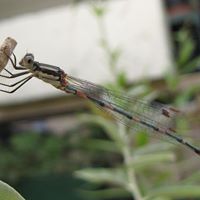What is a group of rattlesnakes called?
Rattlesnakes are a group of venomous snakes of a subfamily called 'pit vipers' a group named for the small heat-sensing pit between each eye and nostril that aids in hunting. A group of rattlesnakes is called a rhumba. The scientific name 'Crotalus' is derived from Greek, meaning "castanet". The 36 known species of rattlesnakes have between 65 and 70 subspecies. Most rattlesnakes are native to the Americas, from Canada to South America.
They can usually be easily identified by their distinctive buzz or rattle, from which their name derives. They use this rattle as a signal for predators to stay away. The rattle is composed of a series of hollow, interlocked segments made of keratin, which are created by modifying the scales that cover the tip of the tail.
Rattlesnakes rarely bite unless provoked or threatened. If bitten, the first and most important thing to do is get away from the snake, as they can strike again if they feel threatened. Don’t waste time trying to catch the snake, but try to remember its size and color. This may help your medical team identify which species it was that bit you and locate the correct antivenin.
If treated promptly, the bites are seldom fatal. The venom from the majority of rattlesnake bites will damage tissue and affect your circulatory system by destroying skin tissues and blood cells and by causing you to hemorrhage internally.
More Info:
naturemappingfoundation.org








